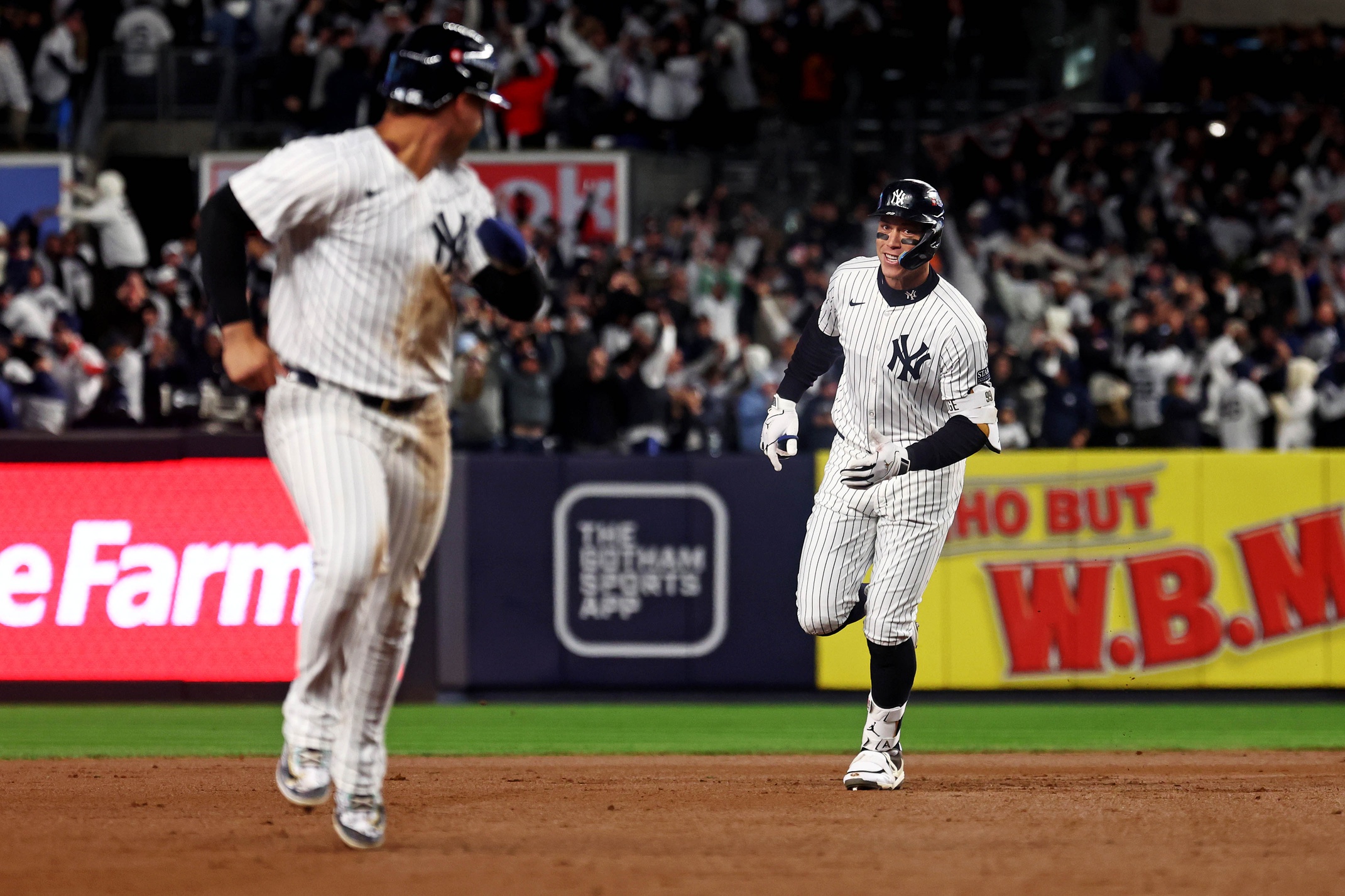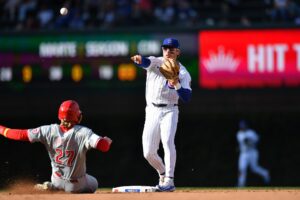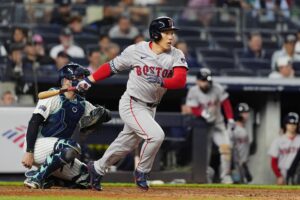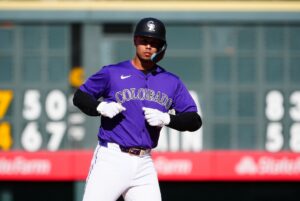Gleyber Torres of the New York Yankees has found the best version of himself at the opportune time: the postseason. In the regular season, it was one of Torres’ worst as a big leaguer. After being one of the 20 worst-qualified hitters by wOBA through August, he has been one of the best since September. A strong October finish is crucial for Torres as he will hit free agency at the season’s end.
Gleyber Torres Rediscovering His Form at the Best Time
What Changed?
The most significant difference for Torres this season has been the dearth of power. An important aspect that has sustained itself despite Torres’ prolonged struggles is a lower strikeout rate. Even in a down season, he was still an above-league-average hitter with a 104 wRC+. The bulk of the lack of production can be attributed to an across-the-board regression in contact quality. His swing decision metrics are largely pretty similar as well as the batted ball profile. However, it could be notable that his pull rate has been declining for many years now. This may be a part of a shift in approach to spray the ball more, but his batting average did not rise as a result in 2024.
An assumption could be made regarding this late surge that his quality of contact reverted back to previous norms. That was not the case in September, but they have been elevated in October. This season, Torres has shown the most balanced batted ball directions of his career. In the postseason, Torres has displayed a career-high in percentage of batted balls to the opposite field. The difference in how those opposite-field batted balls performed in the regular season versus the postseason is interesting. It can likely be chalked up to randomness and fun with a small sample size, or perhaps something mechanically helped unlock more production.
Opposite Field Approach
Here are some statistics on how Torres’ opposite field batted balls performed in the regular season versus the postseason:
| Regular Season | Postseason | |
| wOBA | .309 | .424 |
| xwOBA | .287 | .488 |
| Hard Hit% | 29.7% | 55.6% |
| Barrel% | 3.9% | 22.2% |
| BABIP | .253 | .250 |
It is fascinating to see the quality of contact difference with this approach. Furthermore, while the BABIP on balls to the opposite field is generally a tad lower than the traditional .300, Torres is still seemingly getting unlucky on his balls in play. Comparatively, he has not had much success when pulling the ball in the postseason, with just a .209 wOBA. This defies the normal thesis of pulling the ball for more production and power. However, with the short porch at Yankee Stadium, sometimes you just need to poke one out to right field. Torres’ lone home run of the postseason was a Yankee Stadium special.
Gleyber Torres finds the short porch for a go-ahead home run! pic.twitter.com/Lp1bJHXaS1
— Talkin’ Baseball (@TalkinBaseball_) October 5, 2024
Gleyber Torres’ Future Outlook
Torres began the season as the Yankees leadoff hitter, and after his sustained struggles at the plate, he was bumped down for a large chunk of the season. He was moved back to the leadoff spot in mid-September and has taken off since. Serving as an excellent table setter for one of the best offensive duos of all time, he has provided more depth to this lineup.
Gleyber Torres has been on an absolute HEATER as the Yankees’ leadoff hitter in the 2024 playoffs?
.433 OBP | .500 SLG | 170 wRC+ | 7 R
He’s been a MASSIVE part of New York’s playoff success?#Yankees pic.twitter.com/qBQl3kJWEG
— Fireside Yankees (@FiresideYankees) October 16, 2024
Torres has been one of the best performers in the postseason with a 170 wRC+. This excellent finish was much needed as he now approaches free agency. For much of the season, it seemed a formality that Torres would walk upon the season’s end. Now, with how things have unfolded and him being an integral piece of the lineup in a deep playoff run, it is possible he will return to the Bronx. With so much uncertainty regarding MLB’s regional sports networks and its impact on how teams spend, it will be interesting to see how this offseason plays out. Ultimately, if Gleyber Torres continues to produce on the way to a Yankees’ World Series, the choice to let him walk would be tough.
Photo Credit: © Vincent Carchietta-Imagn Images






